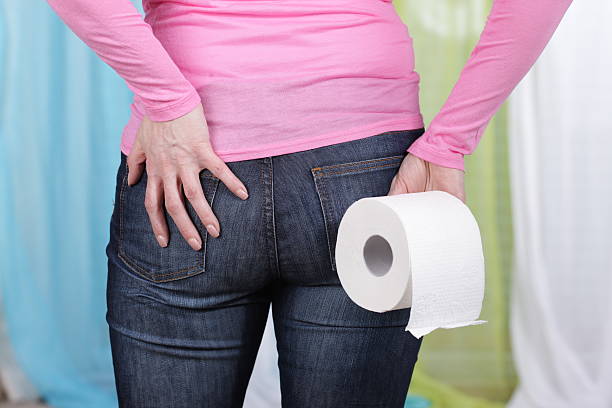Most people can get relief from symptoms by using home treatments and making lifestyle changes.

Picture: iStock
Haemorrhoids are swollen veins located around the anus or in the lower rectum. The haemorrhoidal veins are located in the lowest area of the rectum and the anus.
About half of the adult population have experienced the symptoms of haemorrhoids by the age of 50. Haemorrhoids can either be internal or external.
Internal haemorrhoids develop within the anus or rectum. Internal haemorrhoids lie far enough inside the rectum that you can’t see or feel them.
They don’t usually hurt because there are few pain-sensing nerves in the rectum. Bleeding may be the only sign they’re there. Sometimes though they “prolapse,” or enlarge and protrude outside the anal sphincter.
When this happens, you may be able to see or feel them as moist, pink pads of skin that are pinker than the surrounding area. Prolapsed haemorrhoids may hurt because the anus is dense with pain-sensing nerves.
They usually go back into the rectum on their own. If they don’t, they can often be gently pushed back into place.
External haemorrhoids develop outside of the anus. The external haemorrhoids are the most common and the most troublesome.
They cause pain, severe itching, lower abdominal bleeding and difficulty sitting. If they move, or prolapse, to the outside (usually when you have a bowel movement), you can see and feel it.

Picture: iStock
Blood clots sometimes form within prolapsed external haemorrhoids, causing a very painful condition called a thrombosis. If that happens, the haemorrhoid can turn purple or blue, and could possibly bleed. Despite its appearance, it’s usually not serious, apart from the pain. It will go away in a couple of weeks.
Most people can get relief from symptoms by using home treatments and making lifestyle changes.
Bleeding during defaecation is the most common sign of haemorrhoids. But there are other causes of rectal bleeding like colorectal cancer and anal cancer.
Don’t assume that bleeding is coming from haemorrhoids without consulting a doctor. Also consider seeking medical advice if your haemorrhoids cause pain, bleed frequently or excessively, or don’t improve with home remedies.
If your haemorrhoid symptoms began along with a marked change in bowel habits or if you’re passing black, tarry or maroon stools, blood clots, or blood mixed in with the stool, consult your doctor immediately.
These types of stools can signal more extensive bleeding elsewhere in your digestive tract.
Picture: iStock
Symptoms
The commonest symptoms are:
- extreme itching around the anus
- irritation and pain around the anus
- an itchy or painful lump or swelling near your anus
- faecal leakage
- painful defaecation
- blood on your tissue after having a bowel movement
Haemorrhoids are not life threatening and can usually go away on their own or with just correction of dietary habits. Unfortunately if you have them often, you may develop symptoms of anaemia from severe blood loss that can lead to weakness and shortness of breath.
Causes
The cause is not scientifically proven but the following factors are known to put patients at risk of developing piles:
- straining during a bowel movement
- low fibre diet
- straining from lifting too heavy objects
- complications from chronic constipation or chronic diarrhoea
- anal intercourse
- sitting on the toilet for a long time
- a family history of haemorrhoids
- pregnancy. When the uterus enlarges, it presses on the vein in the colon causing it to bulge.

Picture: iStock
Conditions that cause an increase in abdominal pressure are also known to increase the risk of developing piles, like:
- obesity
- holding your breath when doing something physically hard
Haemorrhoids are also more likely to happen as you get older because the tissues that support the veins in your rectum and anus can weaken.
Treatment at home
Pain relief: Soak in a warm tub for at least 10 minutes every day. If pain is very severe see your doctor. Apply an over-the-counter haemorrhoid cream or suppository containing hydrocortisone, or use pads containing witch hazel or a numbing agent.
Dietary fibre: Increasing fibre in the diet prevents constipation which is the commonest cause of haemorrhoids.
Increase your water intake: Drinking adequate water can keep your stool from hardening. Keep the area clean: Bath or shower daily to cleanse the skin around your anus.
For more news your way, download The Citizen’s app for iOS and Android.





